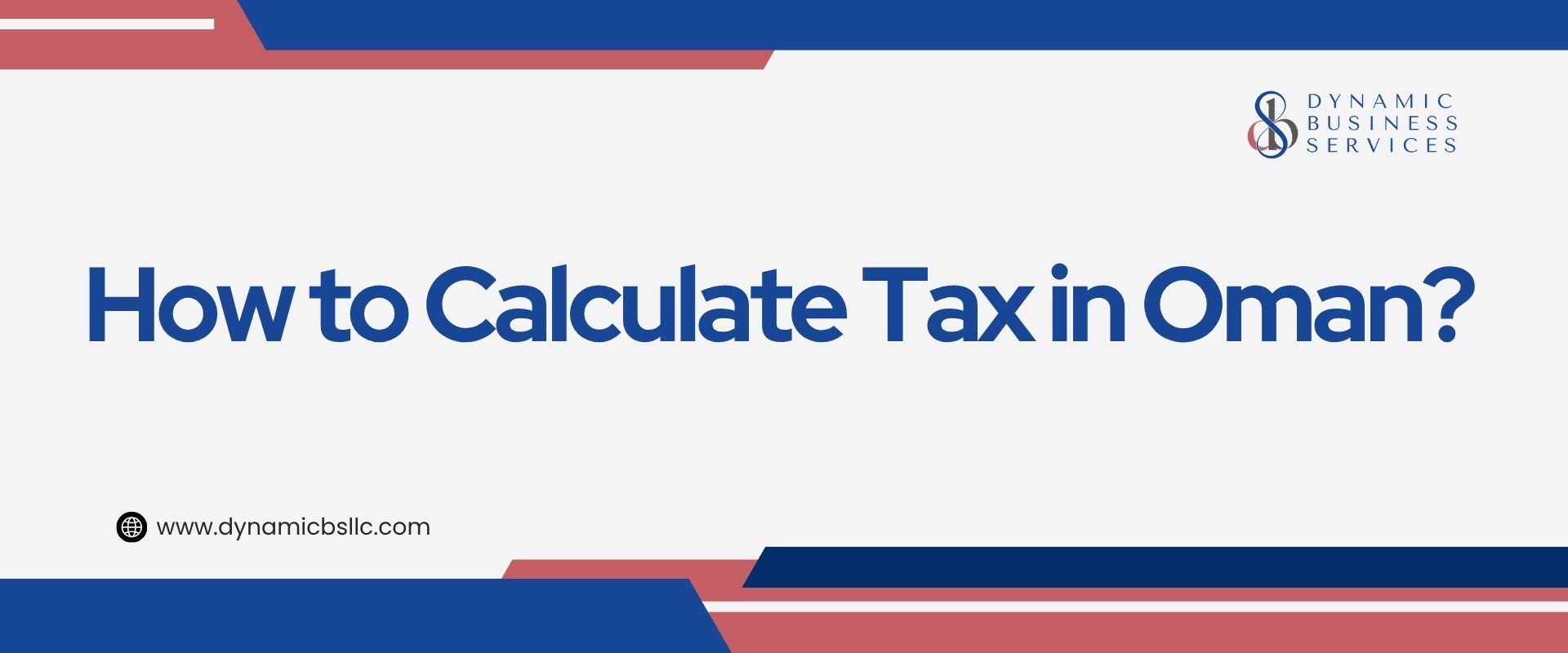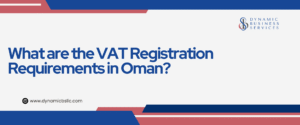Understanding tax calculation in Oman is essential for businesses and individuals operating in the Sultanate. With the implementation of Value Added Tax (VAT) and various corporate tax regulations, knowing how to calculate and comply with Omani tax laws ensures legal compliance and financial efficiency. This comprehensive guide will walk you through everything you need to know about calculating taxes in Oman, including VAT rates, corporate income tax, withholding tax, and practical calculation methods.
Table of Contents
Understanding the Tax System in Oman
Oman has established a modern tax framework designed to diversify government revenue and align with GCC economic policies. The Omani tax system comprises several types of taxes affecting both businesses and individuals. Understanding Direct & Indirect Taxation in Oman is crucial for maintaining compliance and optimizing your tax obligations.
The Sultanate of Oman does not impose personal income tax on individuals, making it an attractive destination for expatriates and foreign workers. However, businesses operating in Oman must comply with corporate tax obligations, VAT requirements, and other fiscal duties administered by the Oman Tax Authority (OTA).
Types of Taxes in Oman
The primary taxes in Oman include:
- Value Added Tax (VAT) – An indirect tax on consumption
- Corporate Income Tax – Tax on business profits
- Withholding Tax – Tax deducted at source on specific payments
- Excise Tax – Tax on specific goods like tobacco and energy drinks
- Customs Duties – Import taxes on goods entering Oman
Each tax type has specific calculation methods, rates, and compliance requirements that businesses and individuals must understand.
How to Calculate VAT in Oman
VAT in Oman is a consumption tax levied on the supply of goods and services. Implemented as part of the GCC VAT framework, it applies to most business transactions within the country.
VAT Rate in Oman
The standard VAT rate in Oman is 5%. This rate applies to most taxable supplies of goods and services. However, certain supplies may be zero-rated (0%) or exempt from VAT, depending on the nature of the transaction.
VAT Calculation Formula
The basic formula for calculating VAT in Oman is:
VAT Amount = (Taxable Amount × VAT Rate) / 100
Or more simply:
VAT Amount = Taxable Amount × 0.05
Step-by-Step VAT Calculation
Example 1: Adding VAT to a Price
If you’re selling a product for OMR 1,000 (excluding VAT):
- VAT Amount = 1,000 × 0.05 = OMR 50
- Total Price (including VAT) = 1,000 + 50 = OMR 1,050
Example 2: Extracting VAT from a Total Price
If the total price including VAT is OMR 1,050:
- Net Amount = 1,050 ÷ 1.05 = OMR 1,000
- VAT Amount = 1,050 – 1,000 = OMR 50
VAT Registration Requirements
Businesses must register for VAT in Oman if their taxable supplies exceed specific thresholds:
- Mandatory Registration: Annual taxable supplies exceed OMR 38,500
- Voluntary Registration: Annual taxable supplies between OMR 19,250 and OMR 38,500
Registered businesses must charge VAT on their supplies, issue tax invoices, maintain proper accounting records, and file periodic VAT returns with the Oman Tax Authority.
Zero-Rated and Exempt Supplies
Understanding the difference between zero-rated and exempt supplies is crucial for accurate VAT calculation:
Zero-Rated Supplies (0% VAT):
- Exports of goods and services outside the GCC
- International transportation services
- Certain food items and basic necessities
- Healthcare services and medical supplies
- Education services provided by licensed institutions
Exempt Supplies (No VAT):
- Financial services (certain banking and insurance products)
- Residential property rentals
- Bare land sales
The key difference: Businesses making zero-rated supplies can reclaim input VAT, while those making exempt supplies cannot.
How to Calculate Corporate Income Tax in Oman
Corporate tax in Oman applies to businesses operating within the Sultanate. Understanding how to calculate your corporate income tax liability is essential for financial planning and compliance.
Corporate Tax Rates in Oman
The corporate income tax rate in Oman varies depending on the taxable income:
- 0% on the first OMR 30,000 of taxable income
- 12% on taxable income between OMR 30,001 and OMR 100,000
- 15% on taxable income exceeding OMR 100,000
Corporate Tax Calculation Formula
Step 1: Calculate Taxable Income
Taxable Income = Gross Revenue – Allowable Deductions
Allowable deductions include:
- Operating expenses (salaries, rent, utilities)
- Depreciation on assets
- Interest payments on business loans
- Professional fees and consultancy costs
- Marketing and advertising expenses
Step 2: Apply Tax Rates
Calculate tax using the progressive tax structure:
Example: Company with OMR 150,000 Taxable Income
- First OMR 30,000: 0% = OMR 0
- Next OMR 70,000 (30,001 to 100,000): 12% = OMR 8,400
- Remaining OMR 50,000 (above 100,000): 15% = OMR 7,500
- Total Corporate Tax = 0 + 8,400 + 7,500 = OMR 15,900
Who Must Pay Corporate Tax in Oman?
Corporate income tax applies to:
- Omani companies (LLC, SAOC, SAOG)
- Foreign companies with a permanent establishment in Oman
- Branches of foreign companies operating in Oman
- Partnerships and other commercial entities
Tax Exemptions and Incentives
Certain entities enjoy tax exemptions or reduced rates:
- Companies operating in free zones may receive tax holidays
- Small and medium enterprises (SMEs) may qualify for tax incentives
- Agricultural and fisheries businesses may receive exemptions
- Companies in priority sectors identified by the government
How to Calculate Withholding Tax in Oman
Withholding tax in Oman is a tax deducted at source from payments made to non-residents for services rendered in Oman. The payer is responsible for deducting and remitting this tax to the Oman Tax Authority.
Withholding Tax Rates
The standard withholding tax rate is:
- 10% on payments to non-resident contractors and service providers
- 10% on royalties and management fees paid to non-residents
- 10% on interest payments to non-residents (subject to tax treaties)
Withholding Tax Calculation
Formula: Withholding Tax = Payment Amount × 10%
Example: If you pay a non-resident consultant OMR 20,000 for services:
- Withholding Tax = 20,000 × 0.10 = OMR 2,000
- Net Payment to consultant = 20,000 – 2,000 = OMR 18,000
Double Taxation Agreements
Oman has signed double taxation treaties with numerous countries to prevent double taxation on income. These treaties may reduce withholding tax rates below the standard 10%. Always check applicable tax treaties before calculating withholding tax.
How to Calculate Excise Tax in Oman
Excise tax is imposed on specific goods considered harmful to health or the environment. This tax is calculated based on the retail selling price or customs value of goods.
Excise Tax Rates in Oman
- 100% on tobacco products and energy drinks
- 50% on carbonated beverages
- 100% on pork products and derivatives
- 100% on electronic smoking devices and liquids
Excise Tax Calculation
Formula: Excise Tax = Taxable Amount × Excise Tax Rate
Example: For energy drinks with a customs value of OMR 1,000:
- Excise Tax = 1,000 × 100% = OMR 1,000
- Total Value = 1,000 + 1,000 = OMR 2,000
After excise tax, VAT is calculated on the total value:
- VAT = 2,000 × 5% = OMR 100
- Final Amount = 2,000 + 100 = OMR 2,100
Tax Filing and Payment Procedures in Oman
Understanding tax filing deadlines and payment procedures is crucial for maintaining compliance and avoiding penalties.
VAT Return Filing
Registered VAT businesses must file periodic returns:
- Monthly returns: Due within 15 days after the end of each month
- Quarterly returns: Due within 15 days after the end of each quarter
Returns must be filed through the Oman Tax Authority portal, including:
- Output VAT (VAT charged on sales)
- Input VAT (VAT paid on purchases)
- Net VAT payable or refundable
Corporate Tax Filing
Corporate tax returns must be submitted:
- Within three months of the fiscal year-end
- Through the OTA electronic portal
- Including audited financial statements and supporting documentation
Penalties for Non-Compliance
Failure to comply with tax obligations results in significant penalties:
- Late filing penalties: OMR 100 to OMR 1,000
- Late payment penalties: 1% of unpaid tax per month
- Tax evasion penalties: Up to OMR 50,000 plus imprisonment
- Failure to register: OMR 20,000 penalty
Best Practices for Tax Calculation in Oman
To ensure accurate tax calculation and compliance:
- Maintain accurate records: Keep detailed accounting records of all transactions
- Use accounting software: Implement tax-compliant software for automatic calculations
- Hire tax professionals: Consult with certified tax advisors for complex situations
- Stay updated: Monitor tax law changes and OTA announcements regularly
- File on time: Submit all returns and payments before deadlines
- Claim eligible deductions: Maximize tax efficiency through legitimate deductions
- Understand tax treaties: Leverage international tax agreements when applicable
- Keep documentation: Maintain supporting documents for at least 10 years
Conclusion
Calculating tax in Oman requires understanding various tax types, rates, and compliance requirements. Whether you’re calculating VAT on sales, determining corporate income tax liability, or withholding tax on non-resident payments, accuracy is essential. The Omani tax system is designed to be transparent and business-friendly, but compliance demands attention to detail and timely action.
By following the calculation formulas and procedures outlined in this guide, businesses and individuals can ensure accurate tax computation and avoid costly penalties. Remember that tax laws evolve, so staying informed through the Oman Tax Authority and consulting with qualified tax professionals is always recommended for complex situations.
Frequently Asked Questions (FAQs)
Is there personal income tax in Oman?
No, Oman does not impose personal income tax on individuals, including Omani citizens and expatriates. This makes Oman an attractive destination for foreign workers who earn tax-free salaries. However, businesses must pay corporate income tax on their profits.
What is the VAT rate in Oman?
The standard VAT rate in Oman is 5%. This rate applies to most goods and services. Some supplies are zero-rated (0%) like exports and certain food items, while others are exempt from VAT, such as financial services and residential property rentals.
How do I register for VAT in Oman?
To register for VAT in Oman, visit the Oman Tax Authority (OTA) portal and complete the online registration. Mandatory registration is required if your annual taxable supplies exceed OMR 38,500. You’ll need your commercial registration, business details, and bank account information.
What is the corporate tax rate for small businesses in Oman?
The corporate tax rate in Oman is progressive. Small businesses with taxable income up to OMR 30,000 pay 0% tax. Income between OMR 30,001 and OMR 100,000 is taxed at 12%, and income exceeding OMR 100,000 is taxed at 15%.
When are VAT returns due in Oman?
VAT returns in Oman are due within 15 days after the end of the tax period. If you file monthly returns, they’re due by the 15th of the following month. For quarterly returns, they’re due within 15 days after the quarter ends.
Can I claim VAT refunds in Oman?
Yes, if your input VAT (VAT paid on purchases) exceeds your output VAT (VAT charged on sales), you can claim a VAT refund. Submit your VAT return showing the net refundable amount, and the Oman Tax Authority will process your refund after verification.
What expenses are deductible for corporate tax in Oman?
Allowable deductions for corporate income tax include business operating expenses such as salaries, rent, utilities, depreciation on assets, interest on business loans, professional fees, marketing costs, and other expenses incurred wholly and exclusively for business purposes.
Do free zone companies pay tax in Oman?
Companies operating in Omani free zones may receive tax holidays or exemptions for specified periods, typically 5 to 30 years. The exact benefits depend on the free zone location and the type of business activity. After the exemption period, standard corporate tax rates apply.
What is withholding tax in Oman?
Withholding tax is a 10% tax deducted at source from payments made to non-resident companies or individuals for services, royalties, interest, or management fees. The Omani entity making the payment is responsible for deducting and remitting this tax to the Oman Tax Authority.
How can I avoid tax penalties in Oman?
To avoid tax penalties in Oman, ensure you register for taxes when required, file all tax returns on time, pay taxes before deadlines, maintain accurate accounting records, issue proper tax invoices, and stay updated with tax law changes announced by the Oman Tax Authority.








